Soldier Story: Kow Ito
Soldier Story
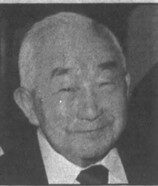
Kow Ito
Sergeant
Company B, 100th Battalion
442nd Regimental Combat Team
Kow Ito was born on November 9, 1924, in Chino, San Bernardino County, California. He was the son of Kinji and Kunito (Takahashi) Ito, who arrived in 1907 and 1924, respectively, from Sendai, Miyagi Prefecture, Japan. Kow’s siblings were: brothers Ken, Ray, and James; and sister Sachiko Agnes.
On June 5, 1917, when Kinji registered for the draft, he was living at 725 New Hampshire Street in Los Angeles, age 28, unmarried, and a self-employed gardener. In 1920, he was still unmarried, age 31, and a dairy farmer in Brawley Township of Imperial County. He married Kuni later in 1920.
In 1930, the couple and their children were living on Robles Avenue in Chino, where Kinji and Kuni worked on their own truck farm. In 1940, they were at the same address and were still truck farmers. Kow was on the high school baseball team and the lightweight football team. He graduated from Chino High School in 1941. That November, Kow participated in the Veterans Day Parade on a float sponsored by the Chino Chamber of Commerce. He portrayed one of four “Agriculture for Defense” future farmers of Chino – he represented the gardener.
Below: Chino High School Lightweight Football Team; Kow is top row, far right
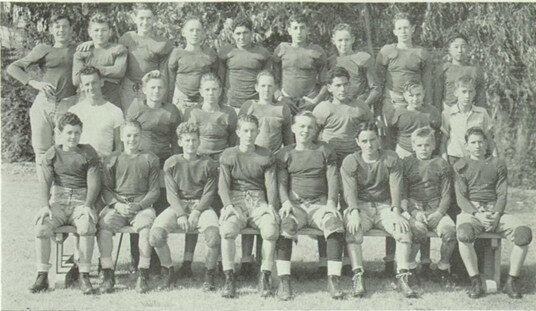
The family was incarcerated at Colorado River WRA Internment Camp (also called Poston) in southwestern Arizona on May 23, 1942. They entered directly from Chino rather than from a WCCA Assembly Center.
Kow signed his draft registration card on December 31, 1942, Local Board No. 148, Room 117, Ontario City Hall, San Bernardino County. His point of contact was his father Kinji Ito. Their home was on Robles Road east of Chino, although at the time they were living in Unit 4-2-D, Colorado River Internment Camp, Arizona. He was 5’3” tall and weighed 140 pounds.
Kow was released from Poston on June 20, 1944, to Fort Douglas, Utah, to enlist in the Army. Brother Ken was released on June 27, 1944, by invitation to Chicago, Illinois. Sachiko was released on February 1, 1945, to Riverside, California. Ray was released on September 14, 1945, to Chino. Their parents and youngest child James were released to Chino on October 12, 1945.
Kow Ito enlisted in the U.S. Army on June 20, 1944, in Phoenix, Arizona – the same day he was released from Poston. His occupation was listed as “Semi-skilled construction occupations.” His residence was listed as Yuma, Arizona. Where he was sent for basic and combat training was not found in our research, but with his enlistment date, it is most likely he was sent to the 171st Infantry Battalion at Camp Shelby, Mississippi, since at this time it was responsible for training replacements for the 442nd RCT.
Ito arrived in Europe as a replacement to the 442nd RCT while they were in France. He was assigned to the 100th Battalion, B Company. Replacements arrived in the Vosges Mountains just as the campaign there had finished in November 1944. They were transported to the Maritime Alps Campaign with the rest of the 442nd. Replacements also arrived on January 12 and February 15, while the Combat Team was in Southern France from November 23, 1944, to March 1945. Ito’s exact date of arrival was not found in our research, but it was likely in one of these three groups.
The mission of the 442nd in southern France was mostly a defensive position to guard against enemy incursion across the border with Italy. The men alternated between time high in the Maritime Alps and time on the coast. They were often given passes to enjoy the peace in Nice and Menton – and for this reason this period was nicknamed the “Champagne Campaign.”
In March, the Combat Team had recovered its numbers after the devasting loss of men killed and wounded in the Vosges. As they were back to combat strength, they were ordered to return to Italy for the Po Valley Campaign (with the exception of the 522nd Field Artillery Battalion that was sent to fight in Germany). They arrived at the staging area in Marseilles between March 17 to 19 and sailed on March 20 to 22 on LSTs for Italy.
The presence of the 442nd in Italy was a closely guarded secret, as their objective was to execute a surprise diversionary attack on the western anchor of the German Gothic Line. The center of this elaborate system of fortifications had been pierced in the fall of 1944, but no one had yet been able to pry the Germans loose from the western end. The Gothic Line in this area was hewn out of solid rock, reinforced with concrete, and constructed to give all-around protection and observation. The Germans were dug into mountain peaks rising almost sheer from the coastal plain, bare of vegetation save for scanty scrub growth.
On March 28, the Combat Team left their initial staging area at Pisa and moved to a bivouac at San Martino, near the walled city of Lucca. All units used their time for training. Firing ranges were set up and the men spent hours adjusting their newly issued weapons to the highest accuracy. New replacements, such as Pfc. Ito, who had no combat experience, practiced small-unit problems with their squads and platoons day and night.
On the evening of April 3, the 100th and 3rd Battalions moved to their forward assembly areas. The 100th moved into the vicinity of Vallecchia. The following night, the 100th moved to its line of departure on the “Florida” hill mass, relieving elements of the 371st Infantry. Their first objective was “Georgia” peak, where they gained its crest within 32 minutes. This, coupled with 3rd Battalion’s success with its surprise attack on Mt. Folgorito, meant that the 442nd had accomplished what other units had been unable to do over the preceding five months.
The 442nd continued its deadly push north along the mountains, continuing to succeed in liberating towns from the retreating Germans. On April 28, the 100th Battalion reached Busalla in the mountain pass that led from Genoa to the Po, and they set up an outpost at Isola del Cantone to await what would happen next. At this point, large groups of Germans were surrendering to US troops. The war ended in Italy on May 2 when German forces there surrendered – a week before the unconditional surrender on May 9 that ended the war in Europe.
During the occupation, the 442nd was in bivouac at Novi Ligure until May 16 when they left for Ghedi Airfield near Brescia. There, they processed and guarded thousands of German POWs for a month. They next moved to Lecco on Lake Garlate. While there, they enjoyed Lake Como and the beautiful countryside. In early July they were sent to the vicinity of Livorno, Pisa, and Florence where they would remain for the rest of their occupation duties of guarding prisoners and military installations the remainder of 1945 and into 1946. During this time, soldiers were being sent back to the US on a point system, with high pointers leaving first. Points were given for such factors as months of service in theater, number of times wounded, number of dependents at home. As Pfc. Ito had been in theater for a few months, he was a “low pointer.”
Kow Ito left from Livorno on June 22 on the S.S. Wilson Victory with 19 officers and 481 enlisted men of the 442nd as they sailed for New York with the RCT’s colors. When they arrived on July 4, all watercraft in the harbor greeted the ship with long blasts on their whistles. The Wilson was escorted by an Army tug boat carrying a band playing Hawaiian music, fire boats presenting a water display, and a Navy blimp and fighter planes overhead. At 6:00 p.m. they docked at the Hudson River Pier 84 on 44th Street, where the soldiers were greeted with fresh lei flown in from Hawaii, hula dancers, and a welcome ceremony. Afterwards, they were transported by train to Camp Kilmer, New Jersey. The following day they were given a grand reception. They soon departed for Fort Belvoir, Virginia, where they were quartered while awaiting plans for their national welcome home. On July 15 they marched in a grand victory parade down Constitution Avenue in Washington DC, followed by a ceremony on the Ellipse where President Harry S. Truman presented the final Presidential Distinguished Unit Citation to the 442nd by attaching the streamer to its colors.
The exact date and place of Ito’s discharge from the U.S. Army were not found in our research.
For his World War II service, Private First Class Kow Ito earned the: Bronze Star Medal, Good Conduct Medal, European-African-Middle Eastern Campaign Medal with two bronze service stars, World War II Victory Medal, Army of Occupation Medal, Distinguished Unit Badge, and Combat Infantryman Badge. He was posthumously awarded the Congressional Gold Medal on October 5, 2010, along with the other veterans of the 100th/442nd Regimental Combat Team. The award states: “The United States remains forever indebted to the bravery, valor, and dedication to country these men faced while fighting a 2-fronted battle of discrimination at home and fascism abroad. Their commitment and sacrifice demonstrates a highly uncommon and commendable sense of patriotism and honor.”
Upon returning home to Chino, Kow joined the Chino Civic Softball League where he played utility infielder for the Knights of Pythias. On November 28, 1948, he was awarded the Bronze Service Star Medal for action during the Po Valley Campaign. The Medal was sent to him by the Commander of the Philadelphia Quartermaster Depot. He was also retroactively promoted to Sergeant from his wartime rank of Private First Class.
At some point, Kow went to Philadelphia, Pennsylvania, where he met Betty Jewell Lee Coryell. They married on May 26, 1951. Betty (born July 21, 1929) was the daughter of William J. and Julia Lee of Hatfield, a suburb of Philadelphia. She was previously married to Clarence Diverty Coryell with whom she had one daughter. Kow and Betty settled in nearby Lansdowne, but soon moved back to his hometown in Chino. Over the years, they raised a family of five daughters and one son.
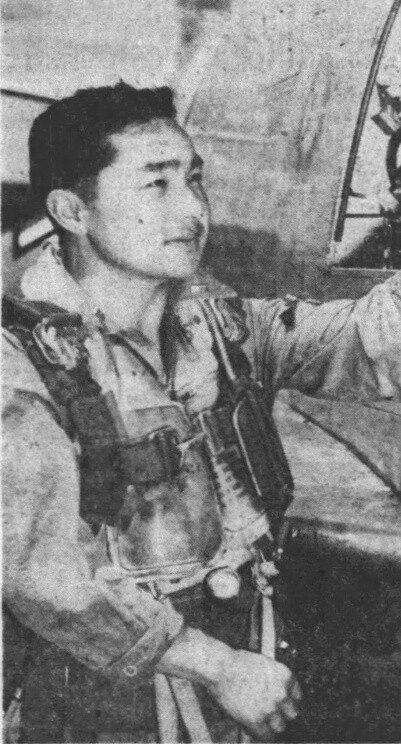
On July 7, 1954, Kow’s younger brother 2nd Lieutenant Ray Ito, age 23, was killed when his F-86 Sabre fighter jet crashed on a routine training mission in South Korea. He had been in the U.S. Air Force for three years and stationed in Korea for seven months.
Right: 2nd Lt. Ray Ito
In Chino, Kow and his brother Ken continued their parents’ tradition by operating a vegetable farm – Ito Brothers Farms. They were featured in a newspaper article in March 1959 highlighting their asparagus, which was introduced to San Bernadino County in the 1930s by their parents and one other Japanese family. By 1959 their farm grew the only asparagus in the county.
Below: L to R – Kow, Ken, and their mother in their asparagus sorting shed, 1959
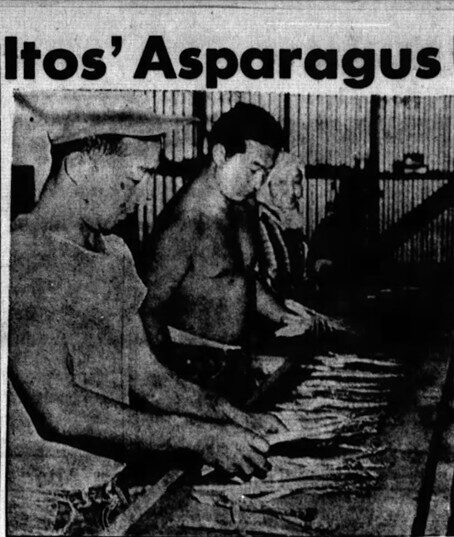
They sold the farm in 1997 to the Chino Basin Municipal Water District, which later became the Inland Empire Utility Agency. Kow and Betty then moved to Rancho Cucamonga near Los Angeles.
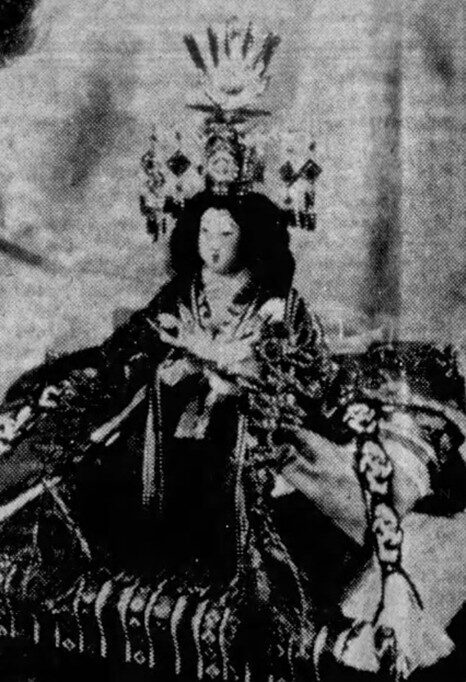
Kow attended several 442nd Veterans Reunions and he was instrumental in securing funding for the Go For Broke Monument in Little Tokyo in Los Angeles. He was a Lifetime Member of the Chino Valley Historical Society and the Chino High School Alumni Association.
Right: One of Kow’s antique Japanese dolls
In March 1960, Kow loaned his large collection of antique Japanese ceremonial doll figures to Mt. San Antonio College for display at their Festival of Dolls. The dolls were purchased by his Grandmother Ito in Japan.
Below: Kow and Betty enjoying retired days
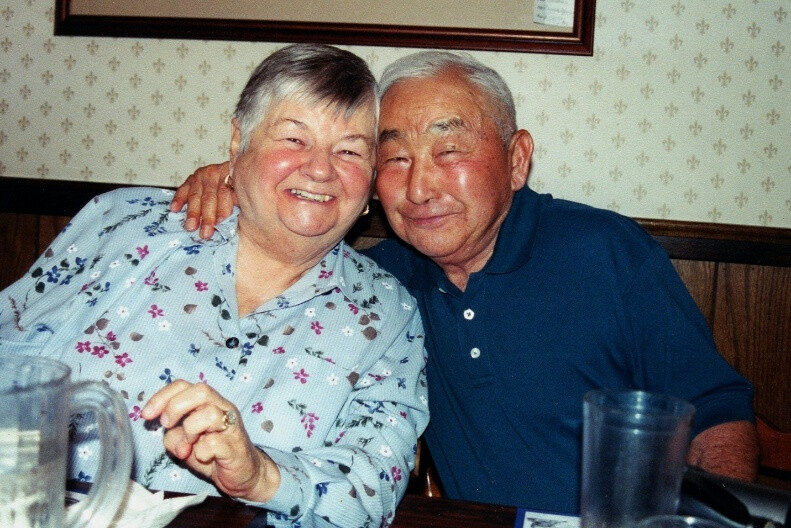
Kow Ito died on March 24, 2005, at the San Antonio Community Hospital in Upland. His funeral was held at the First Baptist Church in Chino and he was buried with full military honors at Bellevue Memorial Park in Ontario. Survivors included his wife Betty, children Judith Mizell, Diane Kowleen Warner, Ray Ito, Deborah Griffin, and Janet Ito Geary; brother James; eight grandchildren; and three great-grandchildren.
Betty Ito died on February 14, 2009, and was buried next to her husband.
Researched and written by the Sons & Daughters of the 442nd Regimental Combat Team in 2025.